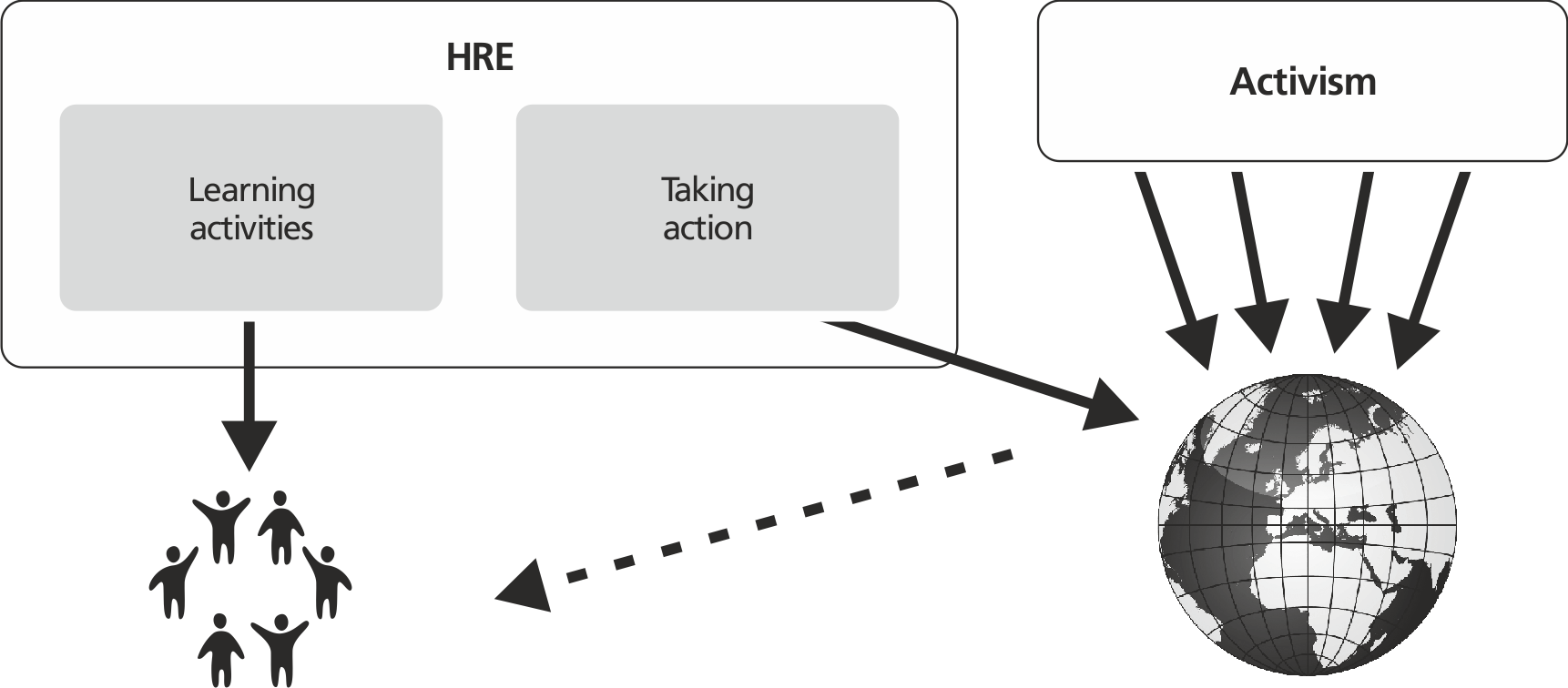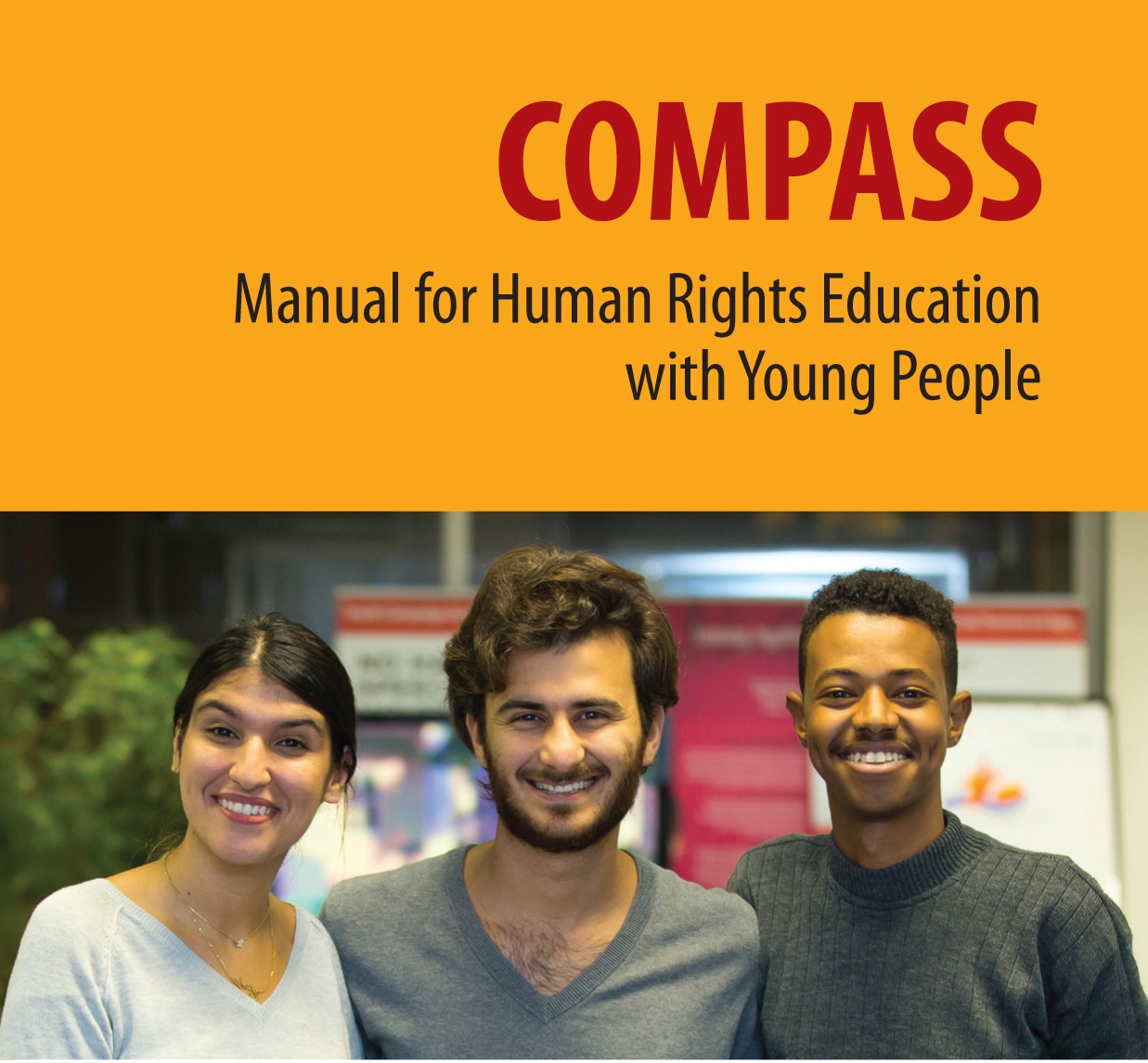HRE and activism
What is activism?
The word "activism" is only about 100 years old, at least in its current use, and derives from the verb to act. An activist is someone who is active in campaigning for change, normally on political or social issues. Activism is what activists do, that is, the methods they use in order to bring about change.
Peace protesters and the right to protest
Two peace activists organised a public reading out of names at the gates of Downing Street, where the British Prime Minister lives. One, Maya Evans (23), read the name of each British soldier killed, while her friend continued with a long list of Iraqis who were known to have lost their lives, each as a result of the war in Iraq. Maya was arrested for the act because she had not notified the police beforehand about the protest. The event received national coverage in the media and sparked a debate about freedom of speech and the right to protest. As a result of this, and many other similar actions, the government agreed to review the law forbidding protest in central London without prior approval from the police.
"I didn't want to be arrested but, as far as I was concerned, I didn't think I was doing anything wrong standing there on a drizzly Tuesday morning with a colleague reading names of people who had died in a war. I don't think it's a criminal offence and I don't think I should have been arrested for it." Maya Evans
Activism, when it is applied to human rights, means defending human rights wherever they are threatened or violated, and at whatever level. Human rights activism is thus about reacting to injustice, to abusive treatment, to violence or discrimination, and trying to correct it. It is about being ready to assist and demonstrate solidarity with the struggles of other people, fighting to ensure that they are treated with respect and dignity, and helping to facilitate a move towards a more humane, egalitarian, rights respecting society. Effective activists possess persistence, creativity, commitment, and often courage, but above all, a belief in human beings and in human rights. They believe that a world where human beings have their human rights respected is a possibility, and they want to make it happen.
Question: Are activists so very different from "normal" human beings? Which qualities of activists can you identify in yourself?
Activism undoubtedly requires and depends on commitment to a cause or an ideal, and normally a constant and long-term commitment. For example:
- Environmental activists win one battle to stop a coal fired power station from being built, and immediately start on another campaign to halt the extension of an airport runway.
- Peace activists wage a 30-year struggle to develop an international convention to ban landmines.
- Local activists fighting the closing of a hospital or sports hall approach the question from every angle, opening another avenue when one has failed.
Be yourself the change you would like to see in the world.
Gandhi
Although we believe that every human being is a "mini-activist", engaging in struggles for different causes throughout his or her life, in this manual we tend to refer not to activism, but to "taking action". Activists – in their more traditional sense – also "take action", but they do it constantly, using many different methods, and they probably do not stop until their actions have had some impact on the issue they are trying to address. The young people that you work with are more likely to be jumping in and out of action, sometimes joining with other activists, and sometimes acting alone on an issue they think is important.
Question: Can you think of "causes" that you have taken up and fought to defend? Do you think of education as a "cause"?
What is "taking action"?
When we refer to a group taking action, we mean something beyond a "formal" activity – such as those in Chapter 2 – and something which probably includes a wider community than the group itself. Taking action, as part of HRE, is designed to bring about a result which is valuable not only from the educational point of view, but also beyond. For example:
- A visit to a local homeless shelter, or asylum centre, can help to break down barriers or prejudices and be a source of comfort to those being visited.
- A letter to the press from young people, picking up on racist or intolerant attitudes, can alert the media to the views of young people, and may make journalists confront their own biases.
- A photo exhibition in the local community showing the impact of pollution on a neighbourhood can open others' eyes, and may help to start a movement to get the issue addressed.
Theatre is a form of knowledge; it should and can also be a means of transforming society. Theatre can help us build our future, rather than just waiting for it.
Augusto Boal
Each of these actions carries a purpose and has an impact beyond the group, but each is also empowering and engaging for the young people themselves. Practical action can bring a lesson to life: it can give human rights meaning and turn them into something positive. Seeing that your actions can have benefits for others – and yourself – is a powerful lesson, a motivating force, and an encouragement that things can change if we engage in changing them.
Question: If you have worked with a group which has engaged in action, what were the key results, in terms of impact and in terms of learning?
HRE, taking action and activism: what are the differences?
• The learning activities in Chapter 2 are focused mainly inwards, on the group: the target is the education of the individual participants.
• Taking action in the outside world is of educational value for the group, but also has an outward focus, on a real issue in the world.
• For activists – both professional and "part-time"- the only real target is the issue and the outside world. Activists will go on working and campaigning until their aim has been achieved
"The kids who are growing" (Putos qui a ta cria)
A group of young people living on the outskirts of Lisbon, all with African backgrounds, used music to deal with the sense of being excluded by society, and to educate others about respect for cultural diversity. As the group explain on their website, second generation immigrants often feel "excluded from society in the country in which they were born and live, and excluded from society in the countries where their parents were born and lived. One way of expressing this dilemma and the frustrations it brings has always been music".
So the young artists decided to use rap and other music as a form of social education capable of motivating young people and promoting social cohesion. They used rhythm and poetry to communicate their message and provided support to other rappers to encourage them to use music as a tool of social transformation. After a number of training courses, and with the support of the Youth Programme from the European Union, the group Putos que a ta cria recorded two CDs and a DVD, participated in different public events, organised a youth festival on HR, and motivated other rappers. "Hip hop is fun but it's also intervention."
http://www.myspace.com/putosquiatacria
The “target” in HRE and in activism

When can a group take action?
Civil activism is something that encourages you to do little deeds every day. Sometimes you understand that the changing of this world becomes your sense of life. Sometimes you think you can do a lot to give a helping hand to people who need it. You are becoming free and you see the world with new eyes.
Ivan Kondratenko, editor-inchief of the Russian student newspaper Perexod.
The short answer is "at any time". The community actions described in section 2 of this chapter can mostly be used either before or after a learning activity in the club or classroom. The advantage of running an action after an activity is that the group should have a deeper understanding of the issues, and may be able to be more creative about what the most effective form of action could be. The advantage of running the action first is that the group may then be more engaged in the activity, having seen for themselves the importance of the issue in question.
Educators who work regularly on HRE will often switch from one model to another, depending on the particular theme, a group's level of interest or awareness, and perhaps their own relationship with a given group. We have tried to link many of the actions suggested in this chapter with particular activities in Chapter 2. These are identified in the margin, and many of them pad out the "Ideas for action" at the end of the activities. Nearly all can be run either as an introduction, before the activity, or afterwards, as a way of giving practical sense to issues already explored.
- Chapter 1 - Human Rights Education and Compass: an introduction
- Chapter 2 - Practical Activities and Methods for Human Rights Education
- Chapter 3 - Taking Action for Human Rights
- Chapter 4 - Understanding Human Rights
- Chapter 5 - Background Information on Global Human Rights Themes
- Appendices
- Glossary




To see what is right and not to do it is want of courage.
Confucius